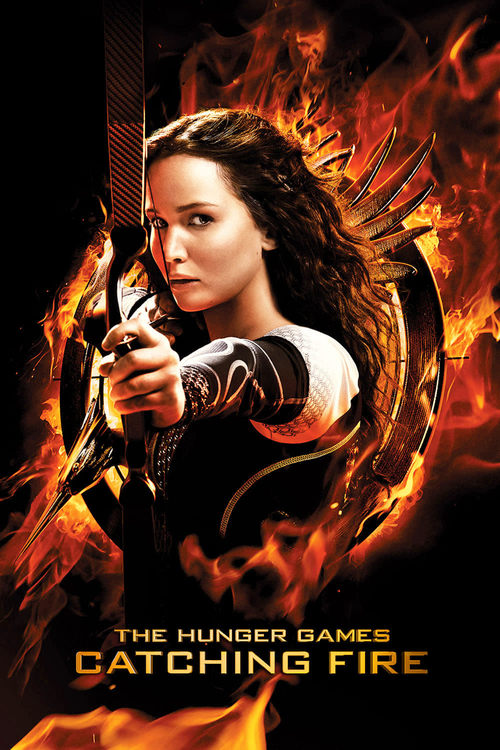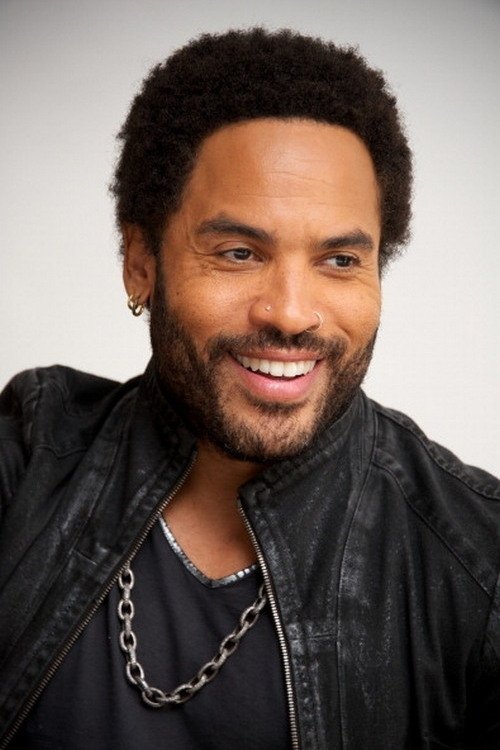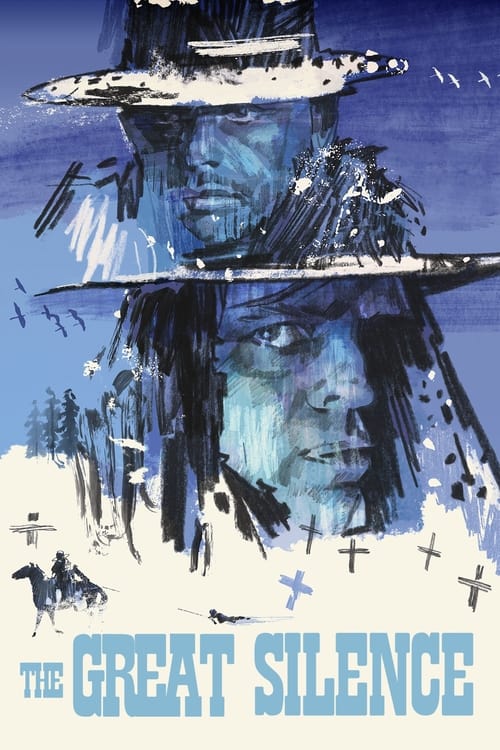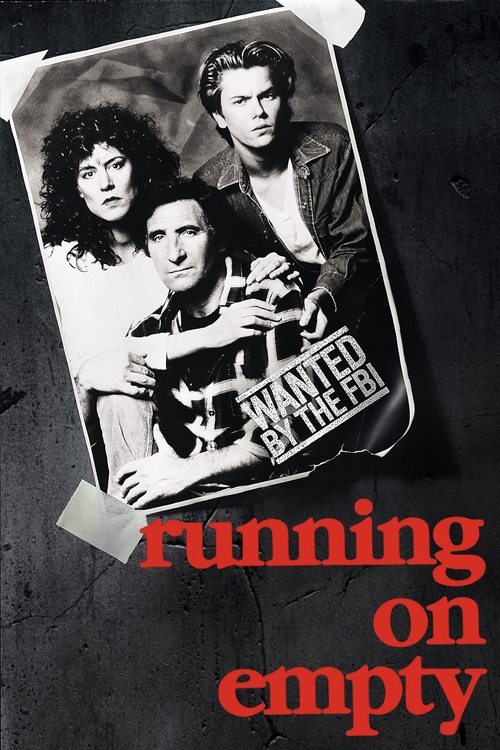
The Hunger Games: Catching Fire
Katniss Everdeen has returned home safe after winning the 74th Annual Hunger Games along with fellow tribute Peeta Mellark. Winning means that they must turn around and leave their family and close friends, embarking on a 'Victor's Tour' of the districts. Along the way Katniss senses that a rebellion is simmering, but the Capitol is still very much in control as President Snow prepares the 75th Annual Hunger Games (The Quarter Quell) - a competition that could change Panem forever.
Dialogues from Movie The Hunger Games: Catching Fire
Quotes from Movie The Hunger Games: Catching Fire
Sound Tracks from The Hunger Games: Catching Fire by James Newton Howard
Atlas
Atlas by Coldplay, Played during the trailer and key emotional moments
Silhouettes
Silhouettes by Of Monsters and Men, Featured in a montage sequence
We Remain
We Remain by Christina Aguilera, Played during the films closing credits
Download App
Memorable Scenes from Movie The Hunger Games: Catching Fire
Katniss Volunteering for Prim
During the Reaping, Katniss Everdeen volunteers to take her sister Prim's place. This moment is filled with tension as Katniss stands up, showcasing her love and bravery. The visuals of Katniss standing tall amidst the crowd, her face resolute, create a powerful impact. After this, we see Katniss entering the arena, now facing the consequences of her decision and the weight of being a symbol of rebellion.
Context: Katniss's selfless act not only shows her love for her sister but also sets the tone for the entire series, where sacrifice and bravery become central themes.
The Mockingjay Pin Gift
Madge gives Katniss the Mockingjay pin right before she departs for the Hunger Games. This moment is tender and symbolic of hope. The pin represents rebellion and becomes a significant part of Katniss's identity. The close-up of the pin as Madge explains its significance creates a heartfelt connection to the cause they are fighting against.
Context: This scene lays the groundwork for the future of Katniss's role in the rebellion against the Capitol and her evolution into a symbol of hope.
Haymitchs Advice
Haymitch Abernathy gives Katniss and Peeta crucial advice on how to survive the arena. His gruff demeanor softens as he reveals his understanding of the Games, highlighting their dangers and manipulations. The tension builds as he discusses the importance of perception and strategy in survival, making his character depth more palpable.
Context: This scene emphasizes the darkness of the Hunger Games and sets up the strategies that will influence Katniss and Peetas actions in the arena.
The Chariot Parade
In the dazzling chariot parade, Katniss and Peeta dress as 'burning' tributes. The moment they emerge, flames surround them, presenting them as powerful figures. The crowds reaction of both awe and fear adds a charged atmosphere. Its a turning point that solidifies their status as symbols in the eyes of the districts.
Context: This moment showcases Katniss and Peetas dual roles as tributes and as symbols of resistance, igniting the spark for rebellion.
Darius's Death
Darius, a kind-hearted peacekeeper, tries to intervene when Gale is being whipped. The moment his death occurs is shocking and heart-wrenching - it strikes at the core of the cruelty of the Capitol's rule. The visuals are brutal and emphasize the brutality of the regime.
Context: Darius's death highlights the personal cost of the Capitol's oppression and the risks involved in standing up against it.
Katniss and Peeta's Emotional Reunion
After the Games, Katniss and Peeta reunite on the Victory Tour. Their conversation is raw and filled with unspoken feelings, showing how the trauma of the Games has affected them. The emotional weight of their relationship reaches a peak during this exchange.
Context: This moment deepens their bond and highlights the psychological impact of the Games, making their relationship more intricate.
The Avox Girl
When Katniss recognizes the Avox girl at the Capitol, memories flood back. The guilt that washes over her is palpable. The visuals of the Avox girl serve as a stark reminder of what happens to those who defy the Capitol, intensifying the films emotional weight.
Context: This moment reinforces the themes of guilt and loss, serving as a reminder of the violent consequences of rebellion.
The Training Center
Katniss and Peetas training in the center reveals the harsh reality of the arena. The pivotal moment comes when they showcase their skills, especially when Katniss excels at archery. The tension rises as the other tributes take notice. This scene sets the tone for their survival through skill and strategy.
Context: This showcases their determination and adaptability, key traits that define their arcs throughout the series.
The Interview
In the tense interviews leading up to the Games, Katniss defies expectations by expressing her true feelings and concerns about the Capitol. Her vulnerability is paired with fierce resolve, captivating the audience. As she speaks passionately, the tension in the room escalates.
Context: This scene illustrates Katnisss defiance and helps establish her as a symbol of resistance, not just a contender in the Games.
The Mockingjay Symbol Revealed
Katnisss actions in the arena and her agreements with Cinna evolve her into the Mockingjay. The moment this is recognized by the audience within the film is both moving and pivotal. It's visually marked by her transformation into a symbol of hope and rebellion.
Context: This metamorphosis is crucial for her character arc and embodies the films exploration of identity and rebellion.
The Peeta's Confession
Peeta reveals to the public that he is in love with Katniss during a press conference. The heavy silence that follows displays the power of his emotions and the weight of their implications. Katnisss reaction reveals her inner turmoil and the pressure of their charade.
Context: This scene deepens the complexity of their relationship and highlights themes of love versus survival.
Katniss' Triumph Over the Mutts
During the tense climax in the arena, Katniss faces off against the muttations. The moment she manages to fend them off showcases her growth and resilience as a character. The powerful visuals of her in action highlight her strength, showcasing her determination to survive.
Context: This moment underscores the brutality of the Games while celebrating Katniss's evolution from a scared girl to a fierce warrior.
The Revelation of the Quarter Quell
When Seneca Crane announces that the tributes of the previous Hunger Games will be forced to compete again in the Quarter Quell, the shock hits like a tidal wave. Katnisss reaction, filled with horror and realization, amplifies the stakes and their sense of despair.
Context: This revelation acts as a massive turning point for the story, escalating the conflict between the Capitol and the districts.
The Rebellion Begins
Katniss ignites the spark of rebellion when she shoots the arrow at the force field during the final moments in the arena. The visuals of the explosion are stunning, symbolizing the end of one era and the beginning of another. Her defiance is masterfully portrayed, leading to the collapse of the arena.
Context: This moment marks the shift toward open rebellion against the Capitol and signals a new chapter for the characters involved.
Gale's Whipping
Gale being brutally whipped for hunting in the woods echoes the horrific punishments enforced by the Capitol. The emotional heaviness and intensity of this moment leave a lasting impact. Katniss's reaction captures the hopelessness of their situation.
Context: This scene serves as a stark reminder of the constant surveillance and control exercised by the Capitol over the districts.
The Hanging Tree Song
Katniss sings 'The Hanging Tree' to a group of rebels, the haunting melody resonates with themes of death and rebellion. The visuals of the scene, with the rebels listening intently, create a powerful, unifying moment. Its an emotional highpoint that solidifies her role as a leader.
Context: The song encapsulates the struggles against oppression and becomes a rallying cry for the resistance.
Peeta's Capture
When Peeta is taken by the Capitol, the emotional fallout is palpable. Katnisss despair and fury reveal her deep affection for him. This moment shifts the stakes entirely, forcing Katniss to confront her feelings and motivations throughout the story.
Context: Peeta's capture intensifies the personal stakes for Katniss, driving her to fight not just for herself but for the ones she loves.
The Mockingjays Symbolic Flight
The moment Katniss becomes a true symbol of rebellion, featuring her in the Mockingjay outfit. The visuals of her soaring through the air, showcasing defiance against the Capitol, fill the audience with a sense of hope and strength. It emphasizes her transformation into a leader.
Context: This transformation beautifully showcases the themes of resilience and hope throughout the narrative.
Katniss in District 11
When Katniss visits District 11 and witnesses the aftermath of the Capitol's cruelty, the emotional gravity is heart-wrenching. The desperate faces of the citizens and their sorrow serve as a reminder of what is at stake in the fight against oppression.
Context: This moment solidifies her role as the face of the rebellion, and the human cost of the Capitols tyranny becomes painfully clear.
Final Showdown with the Capitol
In the climax, Katniss faces off against the Capitol forces. This is the pinnacle of tension, filled with action and emotional weight, showcasing her resilience and determination. The visuals are stunning as the battle unfolds, marking a new beginning for their struggle.
Context: This showdown not only emphasizes the shift toward rebellion but also becomes a pivotal moment in Katniss's growth as a leader.
The Emotional Fallout After the Games
Post-Games, Katniss grapples with the psychological aftermath, burdened by the deaths she has witnessed. The emotional depth of her struggle resonates, as she wrestles with survivor's guilt. The reflective visuals capture her isolation.
Context: This moment highlights the long-lasting effects of trauma and deals with themes of sacrifice, complicating her character development.
The Defeat of Seneca Crane
The night after the Games, Katniss learns about Seneca Cranes fate. The realization of the Capitol's cruelty is profound. The emotional resonance of this moment emphasizes the dire consequences of rebellion and governance under the Capitol.
Context: Seneca's fate reinforces the themes of power and its consequences, providing a chilling reminder of what defenders of the Capitol can expect.
Download App
















